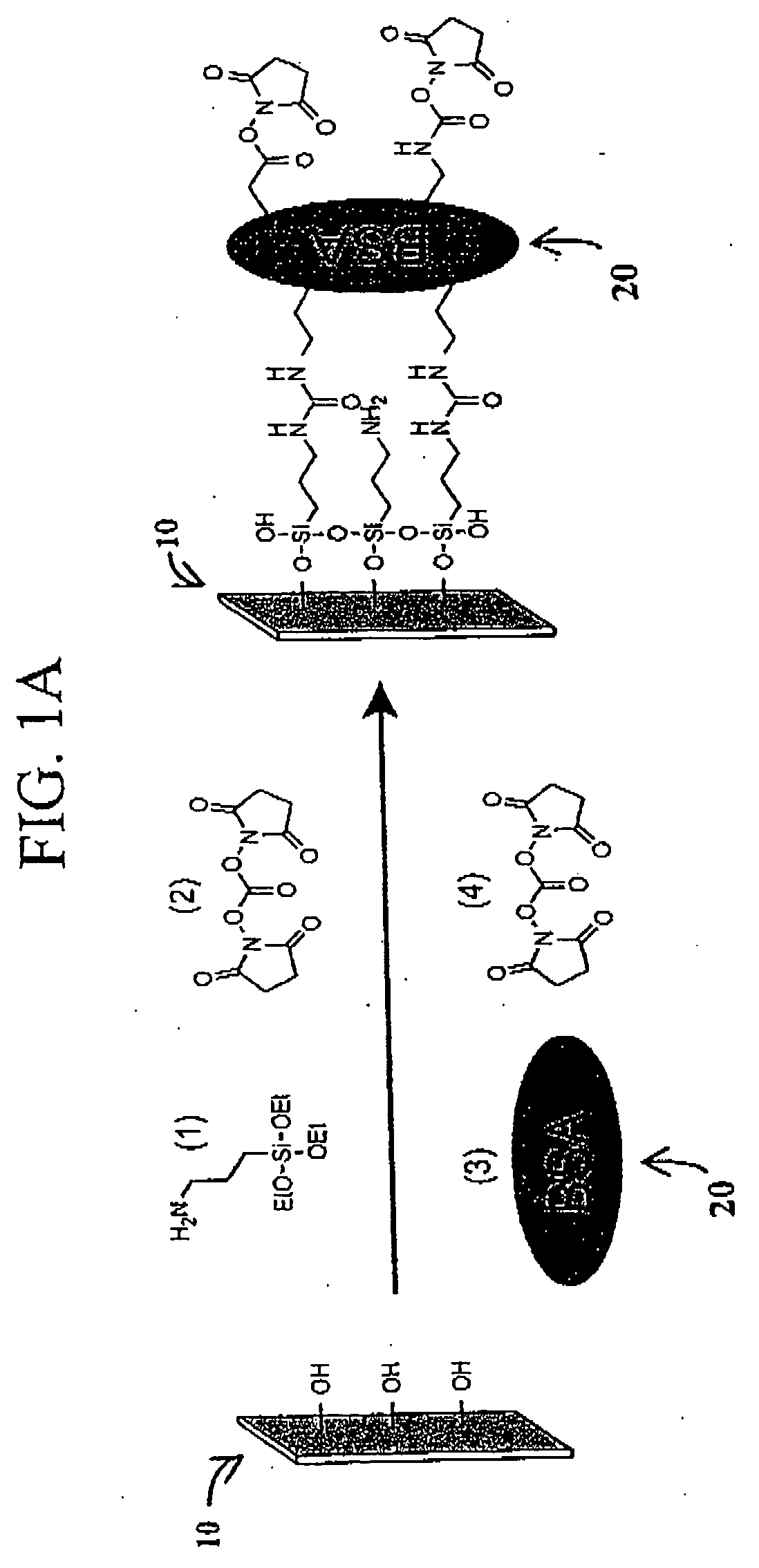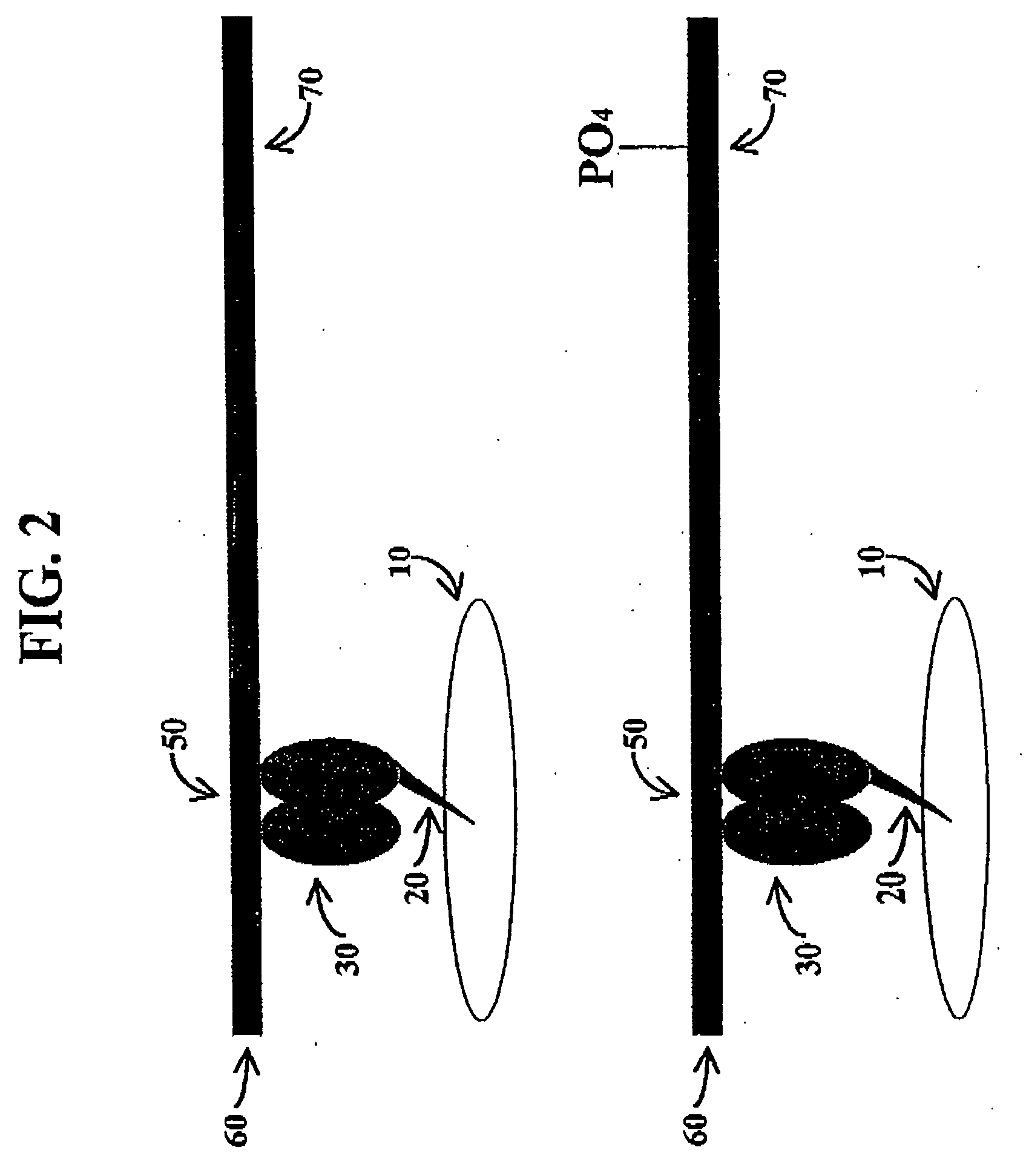Microarrays of functional biomolecules, and uses therefor
a functional biomolecule and microarray technology, applied in the field of diagnostic and analytical chemistry, can solve the problems of low coupling efficiency and many potentially unwanted products
- Summary
- Abstract
- Description
- Claims
- Application Information
AI Technical Summary
Benefits of technology
Problems solved by technology
Method used
Image
Examples
examples
[0130] A. Substrate Surface Preparation
[0131] (i) Method of Stripping Glass Slide and Re-Packing with Reactive Groups
[0132] An example of this preferred method is as follows: first, a plain glass slide (VWR Scientific Products, for instance) is cleaned in a piranha solution (70:30 v / v mixture of concentrated H2SO4 and 30% H2O2) for 12 hours at room temperature. (Caution: “piranha” solution reacts violently with several organic materials and should be handled with extreme care). After thorough rinsing with water, the slides is treated with a silane solution, such as a 3% solution of 3-aminopropyltriethoxysilane in 95% ethanol. And before treating the slides, the silane solution may be stirred for at least 10 minutes to allow hydrolysis and silanol formation. The slide is then briefly dipped in ethanol or like solutions and centrifuged to remove excess silanol. The adsorbed silane layer is then cured (e.g., one hour at 115° C.). After cooling, the slide is washed in ethanol or like ...
PUM
| Property | Measurement | Unit |
|---|---|---|
| volume | aaaaa | aaaaa |
| volume | aaaaa | aaaaa |
| volume | aaaaa | aaaaa |
Abstract
Description
Claims
Application Information
 Login to View More
Login to View More - R&D
- Intellectual Property
- Life Sciences
- Materials
- Tech Scout
- Unparalleled Data Quality
- Higher Quality Content
- 60% Fewer Hallucinations
Browse by: Latest US Patents, China's latest patents, Technical Efficacy Thesaurus, Application Domain, Technology Topic, Popular Technical Reports.
© 2025 PatSnap. All rights reserved.Legal|Privacy policy|Modern Slavery Act Transparency Statement|Sitemap|About US| Contact US: help@patsnap.com



